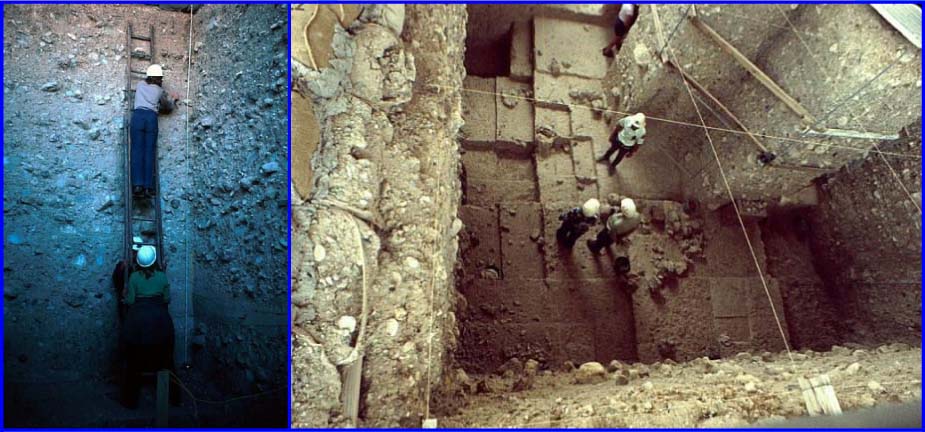Uranium-series and soil-geomorphic dating of the Calico archaeological site, California
James L. Bischoff, Roy J. Shlemon, T. L. Ku, Ruth D. Simpson, Robert J. Rosenbauer and Fred E. Budinger, Jr.
Author Affiliations
1 U.S. Geological Survey, Menlo Park, California 94025
2 Roy J. Shlemon and Associates, Inc., P.O. Box 3066, Newport Beach, California 92663
3 Department of Geological Sciences, University of Southern California, Los Angeles, California 90007
4 San Bernardino County Museum, 2024 Orange Tree Lane, Redlands, California 92373
5 U.S. Geological Survey, Menlo Park, California 94025
6 Calico Early Man Site, P.O. Box 535, Yermo, California 92398
Abstract
Lithic specimens identified as artifacts have been recovered from near the base of the Yermo fan deposits at Calico,
California. The soil on the fan surface is a strongly developed relict
paleosol. Comparison of this soil with dated paleosols
elsewhere in the southwestern United States
suggests that the surface is about 80,000 to 125,000 yr old. Clasts near
the base
of the deposit are well cemented by laminated CaCO3 that probably formed from groundwater action while the fan was still active. Uranium-thorium assays on the CaCO3 indicate an age of 200,000 yr.

This small, finely-worked, symmetrical, black chert graver has been created by the sequential removal of dozens of flakes in a patterned manner. The ventral side is a smooth flake bulb. Found in cemented reddish-tan sands at a depth of nearly 4 m in the Lower Yermo Formation. There is no possibility that this object could be a geofact produced by natural geologic processes. Coated with powdered aluminum. D. Griffin photo

Dorsal (left) and ventral (right) sides of a small beaked graver recovered from a depth of 3.99 m (157 in) in Master Pit I. Powdered aluminum coating to reveal morphological details. Dorsal side clearly fashioned according to a predetermined design, being nearly symmetrical. The ventral side is the unmodified positive bulb of the small flake. The working tip is shown in greater detail in a subsequent image. D. Griffin photos

Multi-function Scraper or Blade
Chalcedony blade with a narrow ventral bulb scar (at right) and a high dorsal arete (at left), bifacially retouched along margins, and unifacially flaked at the distal end, with use-wear evident. Appears to have been used as both a cutting tool and an end scraper. Recovered from Trench 1 at a depth of 1.88 m (74 inches). D. Griffin photos

Blade tool or side scraper
Same as the dorsal view in the preceding figure, but a clearer portrayal of the sharp, evenly-spaced removal scars on the blade laterals. Lateral retouch is bifacial. D. Griffin photo.

Crescentic Chopper
Crescent-shaped chopper or skreblo, showing bifacial flaking and a blunted back edge; a definitive tool type in Asia. Coated with powdered aluminum. From Calico Master Pit II. D. Griffin photo.

Crescentic Scraper
The reverse side of the skreblo-like convex scraper, showing flaking to create a crescentic working edge (top). D. Griffin photo)







Budinger measuring objects exposed in the wall of Master Pit I.
T. Oberlander photo.
Charlie Hatchett
www.pre-clovis.com
www.forum.pre-clovis.com
www.blog.pre-clovis.com
No comments:
Post a Comment